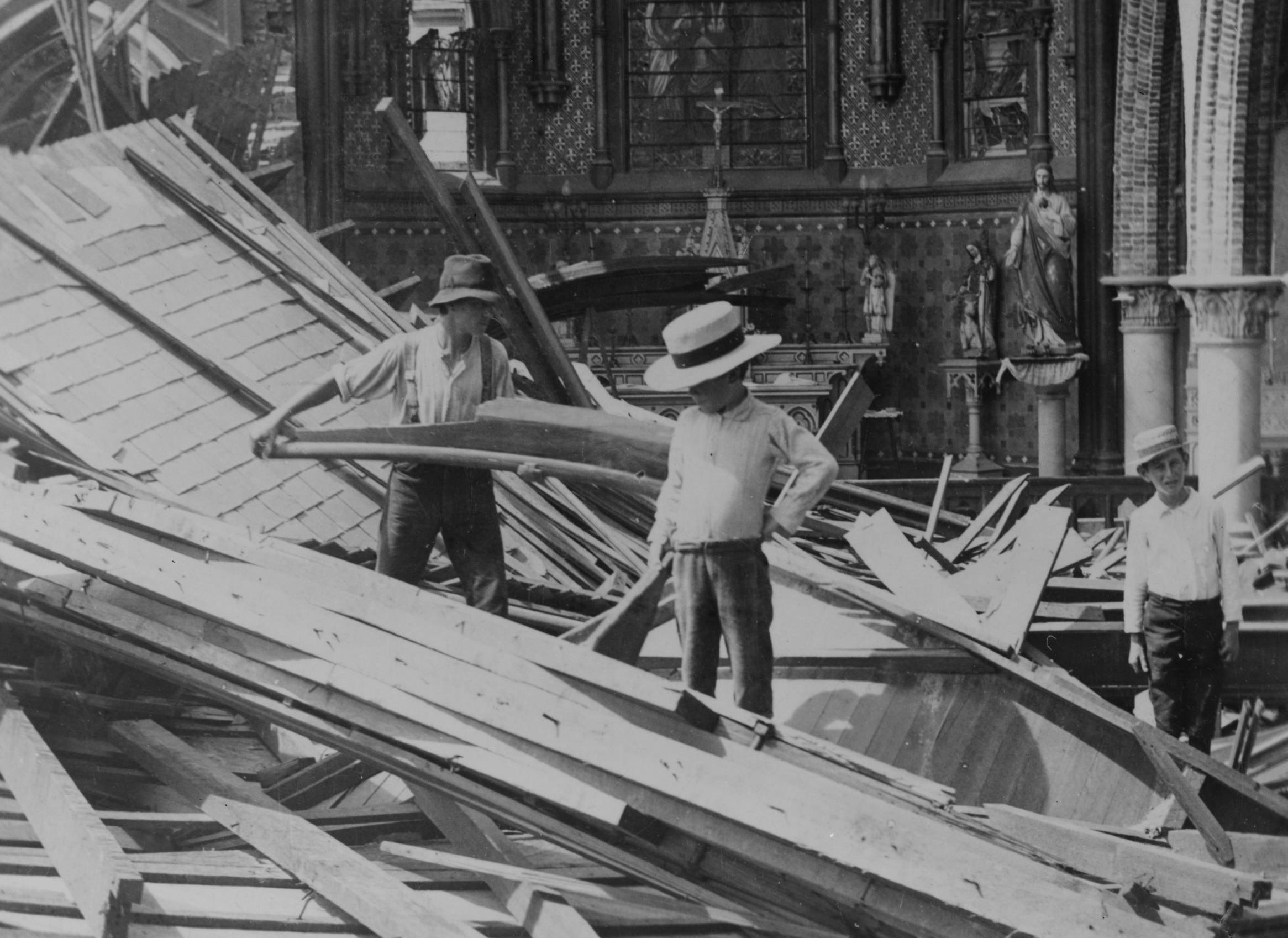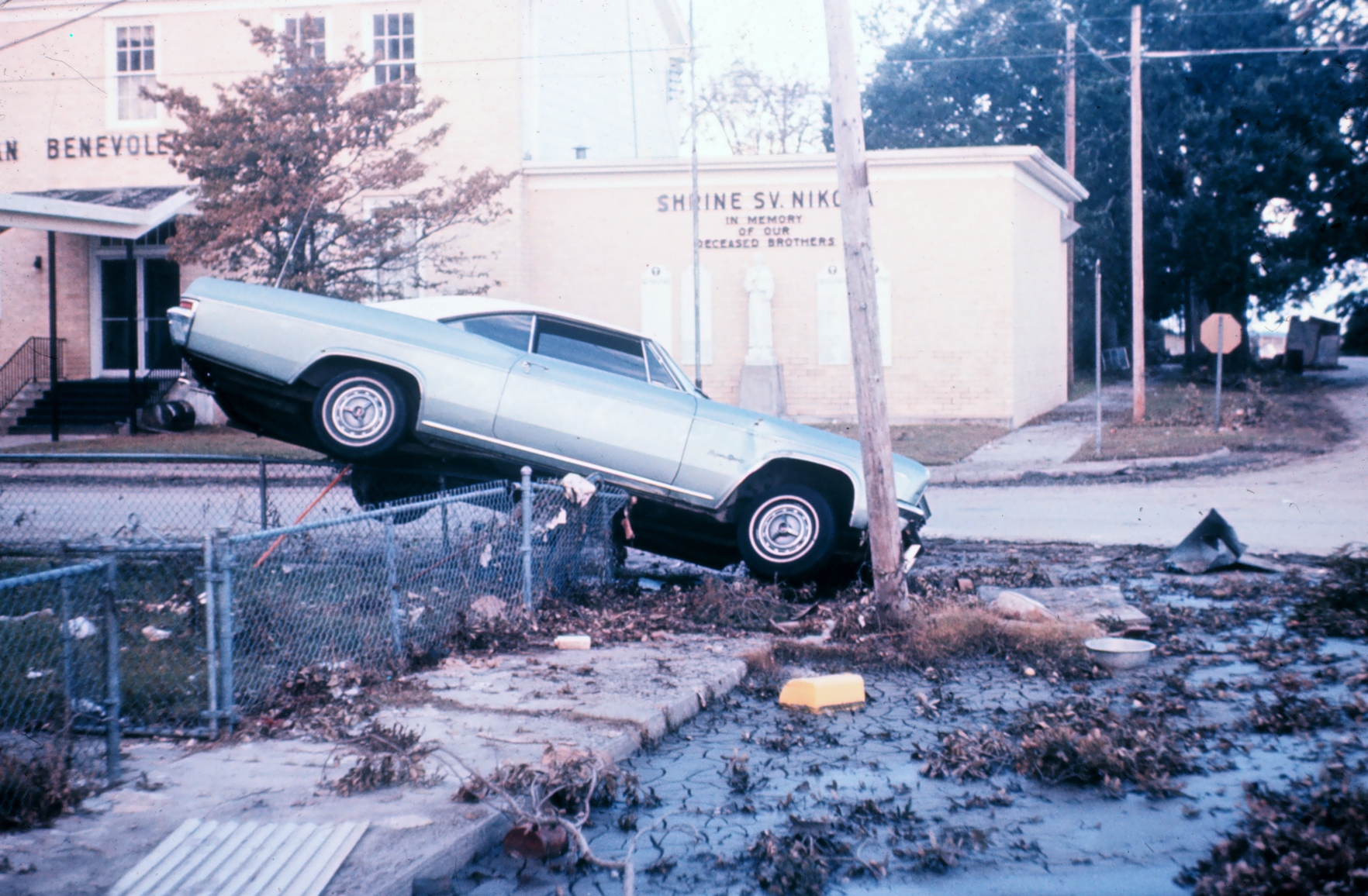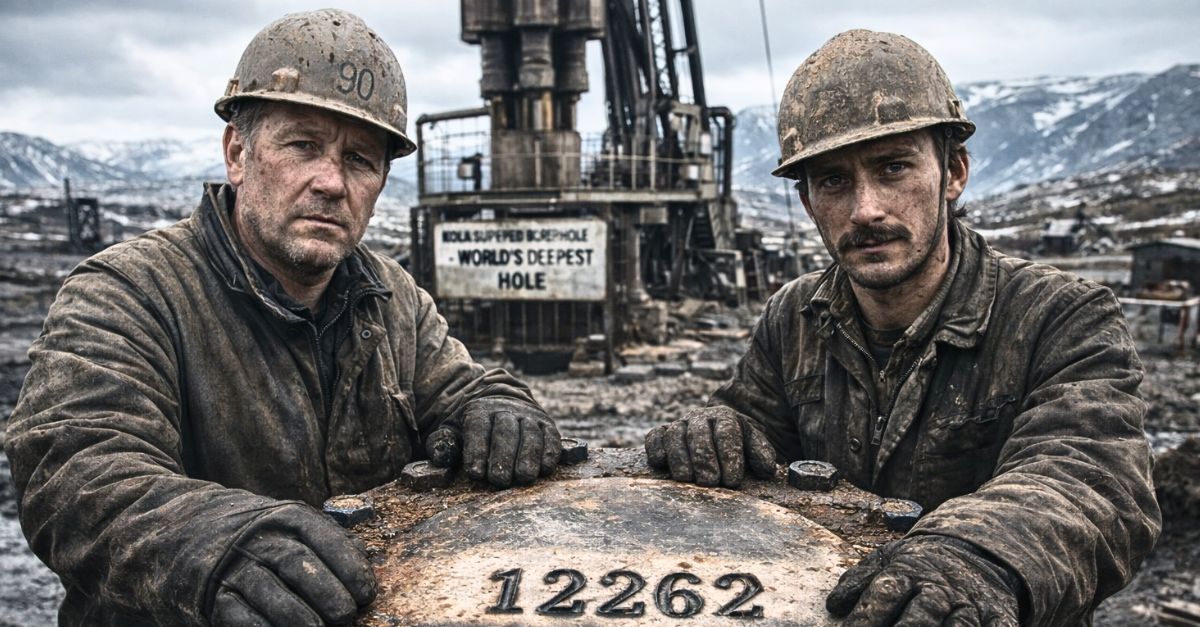Flooding in America
Over the past 50 years, America has experienced a 20% increase in heavy rainfall, as a result of global climate change.
We’ve also seen a huge increase in hurricanes—which most often cause flooding.

Types of Floods: Coastal Floods
There are three main types of floods. The type is coastal.
Also known as storm surges, these typically occur when a high tide coincides with an intense storm, like a tsunami or hurricane, forcing large amount of water onshore.
 North Carolina Department of Transportation, CC BY 2.0, Wikimedia Commons
North Carolina Department of Transportation, CC BY 2.0, Wikimedia Commons
Types of Floods: River Floods
Also known fluvial floods, these occur when the water level of a lake or river overflows onto surrounding lands. These are usually caused by intent rainfall or snowmelt.
 Water Alternatives Photos, Flickr
Water Alternatives Photos, Flickr
Types of Floods: Flash Floods
Also known as pluvial floods, these occur when extreme precipitation causes a flood independent of a body of water. These can happen anywhere, including urban areas when the drainage system or dam is overwhelmed.
 CMBJ, CC BY-SA 3.0, Wikimedia Commons
CMBJ, CC BY-SA 3.0, Wikimedia Commons
The Worst Kind of Flood in America
The worst kind of floods that affect America the most are coastal floods—primarily due to hurricanes and tropical storms.
 Bruno Sanchez-Andrade Nuño, Flickr
Bruno Sanchez-Andrade Nuño, Flickr
Deadliest Natural Disaster in America
Topping the charts is The Galveston Storm of 1900—which is considered the deadliest natural disaster in U.S. history, with a disturbing loss of over 8,000 people.
Second Deadliest Flood
Next on the list for deadliest natural disasters, in terms of flooding, is The Great Flood of 1862, which caused upwards of 4,000 fatalities.
Here is a list of some of the worst floods to devastate the United States.
 Unknown Author, Wikimedia Commons
Unknown Author, Wikimedia Commons
Central Valley, California, 1862
Date: December 1861-January 1862
Cause: Record-high rainfall and snowmelt
Also called The Great Flood of 1862, it was the largest flood in the recorded history of California, Oregon, and Nevada, inundating the western United States and portions of British Columbia and Mexico.
Central Valley Flood, California
The flood caused at least 4,000 fatalities in California alone, and property damages estimated over $3 billion, which was massive for its time.
The sheer cost made this event known as “the storm that caused California to go bankrupt.”
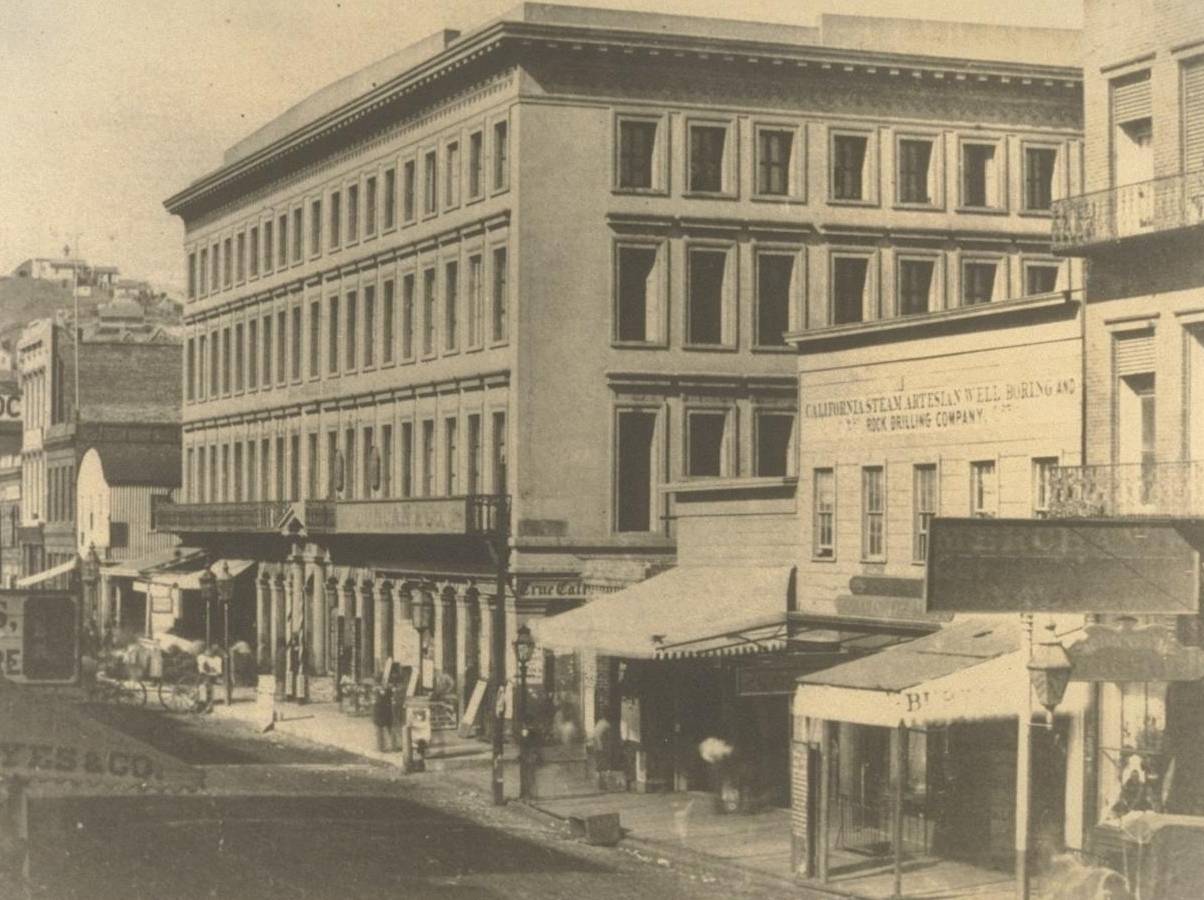 George Robinson Fardon, Wikimedia Commons
George Robinson Fardon, Wikimedia Commons
Johnstown, Pennsylvania, 1889
Date: May 31, 1889
Cause: Failure of the South Fork Dam after heavy rainfall
The Johnstown Flood included a 30-foot wall of water surging toward the town at speeds of 40mph, resulting in more than 2,200 fatalities.
 E. Benjamin Andrews, Wikimedia Commons
E. Benjamin Andrews, Wikimedia Commons
Johnstown, Pennsylvania
Countless other people suffered serious injuries and hundreds of people were left homeless. Property damages were estimated at over $600 million.
 Francis Schell and Thomas Hogan, Wikimedia Commons
Francis Schell and Thomas Hogan, Wikimedia Commons
Sea Islands Hurricane, 1893
Date: August, 1893
Cause: Hurricane
The Sea Islands Flood was the devastating result of Sea Islands Hurricane, which at the time was the 7th deadliest hurricane in U.S. history.
Sea Islands Hurricane
The flood took the lives of 2,000 people and left thousands more homeless.
Property damages were estimated at $23 million and took over 10 months to rebuild.
 Unknown Author, Wikimedia Commons
Unknown Author, Wikimedia Commons
San Ciriaco Hurricane, 1899
Date: August-September, 1899
Cause: Category 4 Hurricane
The San Ciriaco hurricane was the longest-lived Atlantic hurricane on record, and the third-longest-lived tropical cyclone globally on record—lasting 4 weeks in total.
 North Carolina Division of Archives and History, Wikimedia Commons
North Carolina Division of Archives and History, Wikimedia Commons
San Ciriaco Hurricane
The hurricane was also one of the deadliest Atlantic hurricanes in recorded history, with an estimated 3,800 fatalities.
 Unknown Author, Wikimedia Commons
Unknown Author, Wikimedia Commons
San Ciriaco Hurricane
The hurricane hit Leeward Islands, Puerto Rico, Hispaniola, Turks and Caicos Islands, Cuba, Bahamas, East Coast of the United States, and Atlantic Canada—causing serious flooding on many of the island nations.
Property damage was estimated at over $74 million.
 Frederick Albion Ober, Wikimedia Commons
Frederick Albion Ober, Wikimedia Commons
Galveston, Texas, 1900
Date: Sept. 8, 1900
Cause: Category-4 Hurricane
The Galveston Flood, also referred to as the Galveston Hurricane of 1900, is the deadliest natural disaster in United States history, with 8,000 fatalities, and one-third of the population homeless.
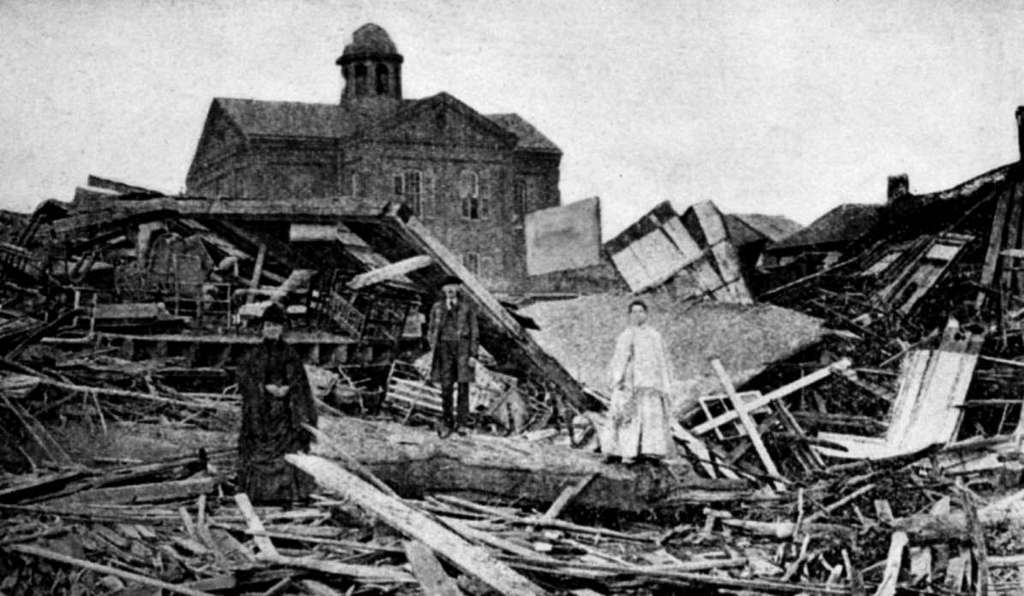 Unknown author, Wikimedia Commons
Unknown author, Wikimedia Commons
Galveston, Texas
The hurricane left the coastline under 12 feet of water, and property damages were estimated at $1.25 billion.
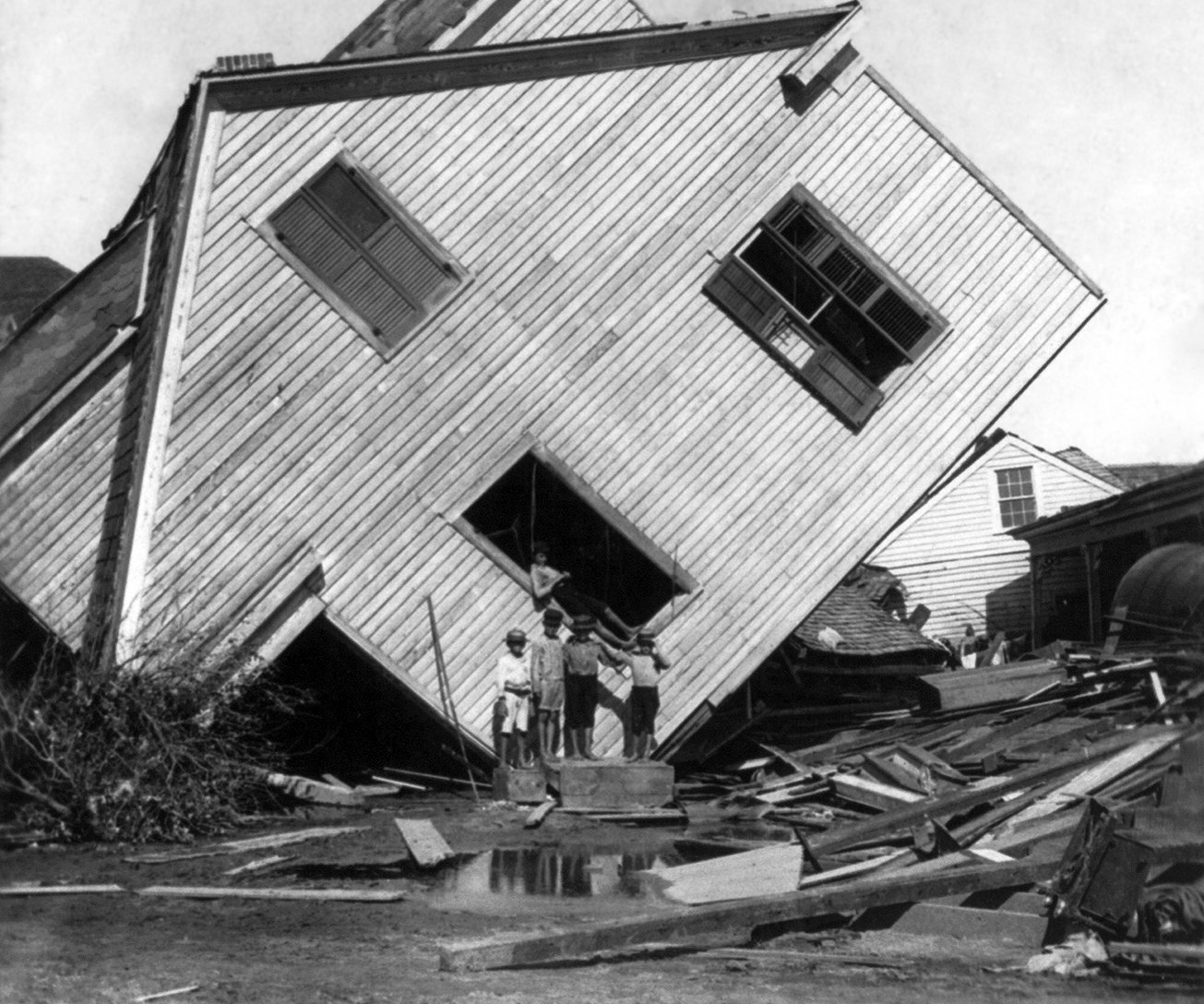 Library of Congress, Wikimedia Commons
Library of Congress, Wikimedia Commons
Mississippi River, 1927
Date: April-May 1927
Cause: Levee system overpowered by heavy rainfall
This flood is known as the most destructive river flood in the history of the United States.
 National Archives and Records Administration, Wikimedia Commons
National Archives and Records Administration, Wikimedia Commons
Mississippi River
Over 500 people lost their lives and 600,000 people were left homeless.
More than 23,000 square miles of land was submerged.
 National Archives and Records Administration, Wikimedia Commons
National Archives and Records Administration, Wikimedia Commons
Lake Okeechobee Flood, 1928
Date: September, 1928
Cause: Hurricane
The Lake Okeechobee Hurricane was one of the deadliest hurricanes in the recorded history of the North Atlantic basin, and the fourth deadliest hurricane in the United States.
Lake Okeechobee Flood
Torrential rainfall overwhelmed the dam holding back the water of Lake Okeechobee and flooded hundreds of square miles to depths more than 20 feet, taking the lives of over 2,500 people.
Property damages were estimated at over $25 million.
Ohio River, 1937
Date: January-February 1937
Cause: Heavy rainfall
This flood remains the flood of record for many locations along the Ohio River, with 385 fatalities and over a million people left homeless.
 Huntington District, Wikimedia Commons
Huntington District, Wikimedia Commons
Ohio River Flood
Damage stretched from Pittsburgh, Pennsylvania, to Cairo, Illinois. Federal and state resources were strained to aid recovery as the disaster occurred during the depths of the Great Depression.
Property damages reached over $10 billion.
 Russell Lee, Wikimedia Commons
Russell Lee, Wikimedia Commons
Hurricane Camille, 1969
Date: August 1969
Cause: Category-5 Hurricane
Hurricane Camille became the second most intense tropical cyclone on record to strike the United States, with more than 260 fatalities and tremendous damage.
 Coast and Geodetic Survey, Wikimedia Commons
Coast and Geodetic Survey, Wikimedia Commons
Hurricane Camille
Camille caused tremendous damage in its wake and produced a peak official storm surge of 24 feet. It flattened nearly everything along the Mississippi coast.
Property damages are estimated at over $12 billion.
Rapid City, South Dakota, 1972
Date: June 9-10, 1972
Cause: Rapid rainfall caused rivers to overflow
Also known as the Black Hills Flood of 1972, this flash flood was the most detrimental flood in South Dakota history, and one of the deadliest floods in U.S. history.
 VCU Capital News Service, Flickr
VCU Capital News Service, Flickr
Rapid City, South Dakota
The flood resulted in 238 fatalities and 3,057 injuries, and left thousands of people homeless. Property damage was estimated at over $2 billion.
Big Thompson Canyon, Colorado, 1976
Date: July 31, 1976
Cause: A stalled thunderstorm inundated the river with water at rapid speeds
This flash flood is considered one of the deadliest floods in the history of Colorado, causing at least 144 fatalities and 250 injuries, along with at least 5 missing.
 Lvaughn7, CC BY-SA 4.0, Wikimedia Commons
Lvaughn7, CC BY-SA 4.0, Wikimedia Commons
Big Thompson River Flood
Heavy rainfall caused the Big Thompson River in Colorado to crest. The crest was caused by a stalled thunderstorm complex that produced rainfall totals of 12–14 inches in record time.
People were instantly swept away without warning.
Big Thompson Canyon, Colorado
A total of 7.5 inches of rain fell in one hour, totaling over 14 inches in only a few hours. Property damages reached over $190 million.
Mississippi River, 1993
Date: May-October 1993
Cause: Extreme weather and hydrologic conditions
This flood is often known as The Great Flood of 1993, and is among the costliest and devastating to ever occur in the U.S., with over 50 fatalities.
 Unknown Author., Wikimedia Commons
Unknown Author., Wikimedia Commons
Mississippi River Flood
The waters stayed at flood stage for 81 consecutive days. Property damages reached over $30 billion.
 Markkaempfer, CC BY-SA 3.0 , Wikimedia Commons
Markkaempfer, CC BY-SA 3.0 , Wikimedia Commons
Tropical Storm Allison, 2001
Date: June 5-20, 2001
Cause: Tropical Storm
A massive flood that inundated Texas was the result of Tropical Storm Allison, which lasted unusually long for a June storm—totaling 16 consecutive days—dumping torrential rain continuously.
 Butch DuCote, Wikimedia Commons
Butch DuCote, Wikimedia Commons
Tropical Storm Allison
About 55 fatalities occurred, with 23 of them being in Texas alone. Property damage was estimated at over $15 billion.
 Galveston National Weather Service, Wikimedia Commons
Galveston National Weather Service, Wikimedia Commons
Hurricane Katrina, 2005
Date: August-September 2005
Cause: Hurricane & Engineering flaws in the flood protection system
This flood is the costliest natural disaster in U.S. history, with over 1,800 fatalities and millions of people left homeless.
 The U.S. National Archives, Picryl
The U.S. National Archives, Picryl
Hurricane Katrina
Engineering flaws in the flood protection system, particularly the levee around the city of New Orleans, is the cause of the massive flooding that ensued. Eventually, 80% of the city was completely flooded.
Property damages were over $200 billion.
 Jocelyn Augustino, Wikimedia Commons
Jocelyn Augustino, Wikimedia Commons
Ka Loko Reservoir Flood, 2006
Date: March 14, 2016
Cause: Inadequate dam maintenance & heavy rainfall
The Ka Loko reservoir dam had not been adequately maintained prior to a heavy rainfall that caused the dam to burst, sending a 70-foot wall of water surging downhill to the town of Kilauea, Hawaii.
 Polihale, CC BY-SA 3.0 , Wikimedia Commons
Polihale, CC BY-SA 3.0 , Wikimedia Commons
Ka Loko Reservoir Flood
The flood took the lives of seven people—including children and a pregnant woman. The owner of the damn was charged for the fatalities and reckless endangerment.
 Unknown Author, CC-BY-SA-3.0, Wikimedia Commons
Unknown Author, CC-BY-SA-3.0, Wikimedia Commons


